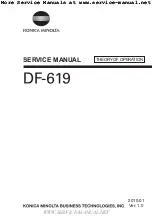
34
GENERIC REVERB INTRODUCTION
The TC Reverb Palette
Until 10 years ago, digital reverb was mostly
used as a Generic effect applied to many
sources of a mix. Nowadays, where more aux
send and returns are at disposal, new
approaches have emerged. Elements of the
mix are being treated individually, adding room
character, flavor and depth in more creative
and complex ways.
At TC, we call this a Source based approach,
and we have put more than 30 man-years of
development time into design and refinement of
Source based room simulation.
When Generic digital reverbs were invented,
they stretched the DSP power and memory
bandwidth capabilities of their time; and Source
specific processing was completely out of the
question. Even though we may now consider
Generic types to be less than ideal, they still
have applications for which they may be
chosen instead of their Source based cousins.
The large reverb and room simulation palette of
High end reverbs by TC Electronic allows the
user to choose whatever principle suits a
present need. Below you will find a suggestion
of when to use what.
Generic Reverb
Generic reverb is primarily a flattering sustain
effect which can be added to many sources of
a mix, or a complete stereo or multichannel
stem. It adds little character but also does no
harm, because the effect is blurred or washed
out.
If Early Reflections are offered, there are only
few of them and they play a rudimentary role.
Therefore, a strong localization is not imposed
on the signal, which is what you want when one
reverb is used on many sources.
For a graphical artist, the equivalent tool to
Generic reverb would be a paint brush.
Generic Reverb Pros
• 1st choice for composite, mixed material and
stems
• 1st choice when used with multichannel
joystick on console or DAW
• 1st choice for adding to classical main
microphone pick-up
• Works well on moving sources
• Prettier than life
• Quick and easy to use
Generic Reverb Cons
• Blurring takes away character from individual
sources
• Pitch modulation may be a problem with
some material
• Mono compatibility often compromised to
obtain extra width
• Imaging inferior to Source based reverb
Source Reverb
When elements of a mix are picked up
individually, a chance exists to define exactly
how each of them is to be heard. There is no
reason to apply one Generic reverb to several
single sources, unless they are supposed to
present an identical position to the final listener,
or you have run out of aux sends.
When it is desirable to distinguish between
single elements sharing more or less the same
panning position, source based reverb should
be a first choice. Subtle discrimination between
reflection patterns of individual sources can
make all the difference in the world when it
comes to obtaining depth, expression and
natural imaging.
Source Reverbs are able to generate multiple,
complex Early Reflection patterns. For best
results, if some reflections are already picked
up by a microphone, they should be excluded
from the simulated pattern by using the
appropriate reflection decrease control.
Instruments or sources can alternatively share
the same reverb input in groups, e.g. stage left,
center and right, for a more complex and
desirable result than a Generic, one-send
reverb approach.
For a graphical artist, the equivalent tool to
Source reverb would be a 3D rendering system
or Virtual Studio.
Source Reverb Pros
• 1st choice when input sources can be
separated
• 1st choice with spot microphones
• More depth and distinction obtainable in a
mix
• Adds character and definition to a source
Содержание REVERB 4000
Страница 1: ...REVERB 4000 HIGH DEFINITION REVERB U Us se er r s s m ma an nu ua al l...
Страница 2: ......
Страница 6: ......
Страница 11: ...SIGNAL FLOW 9...
















































